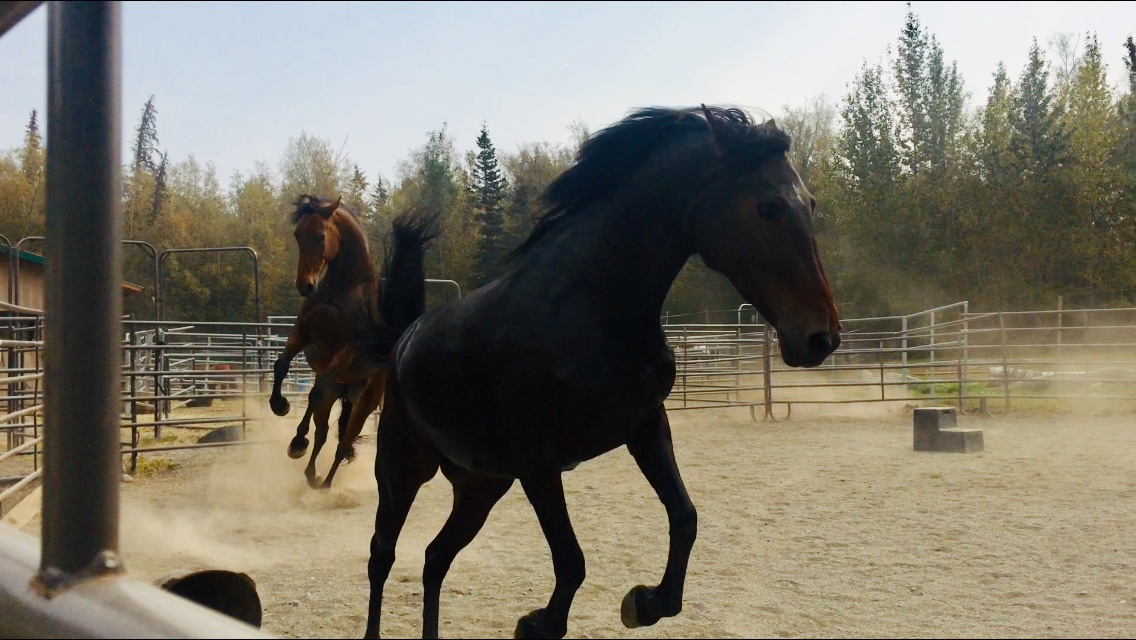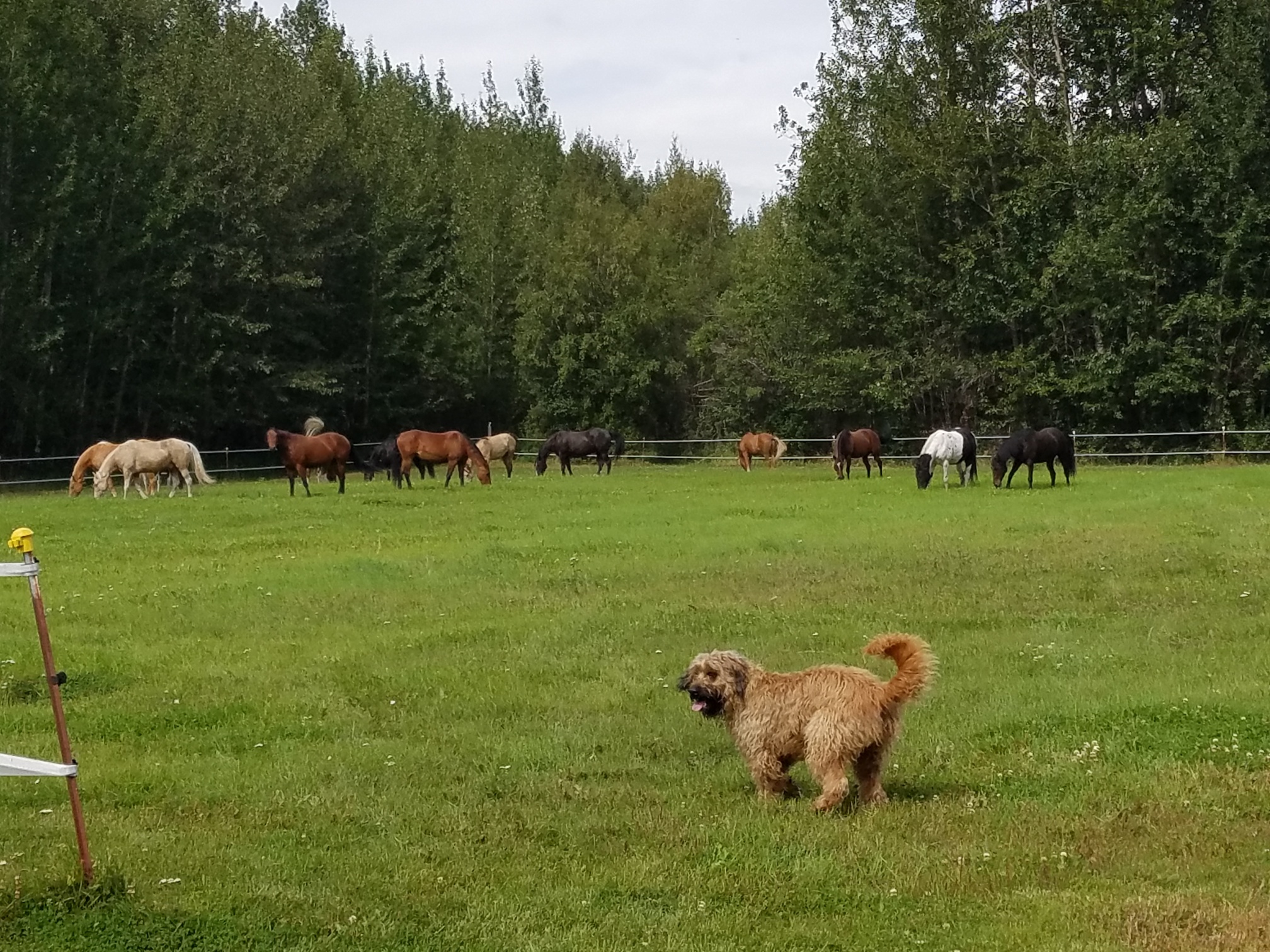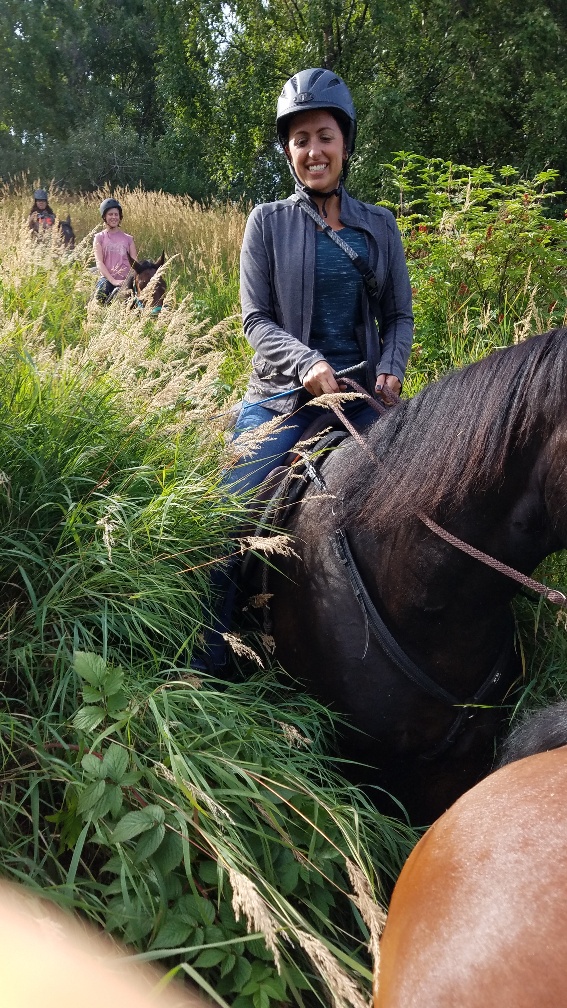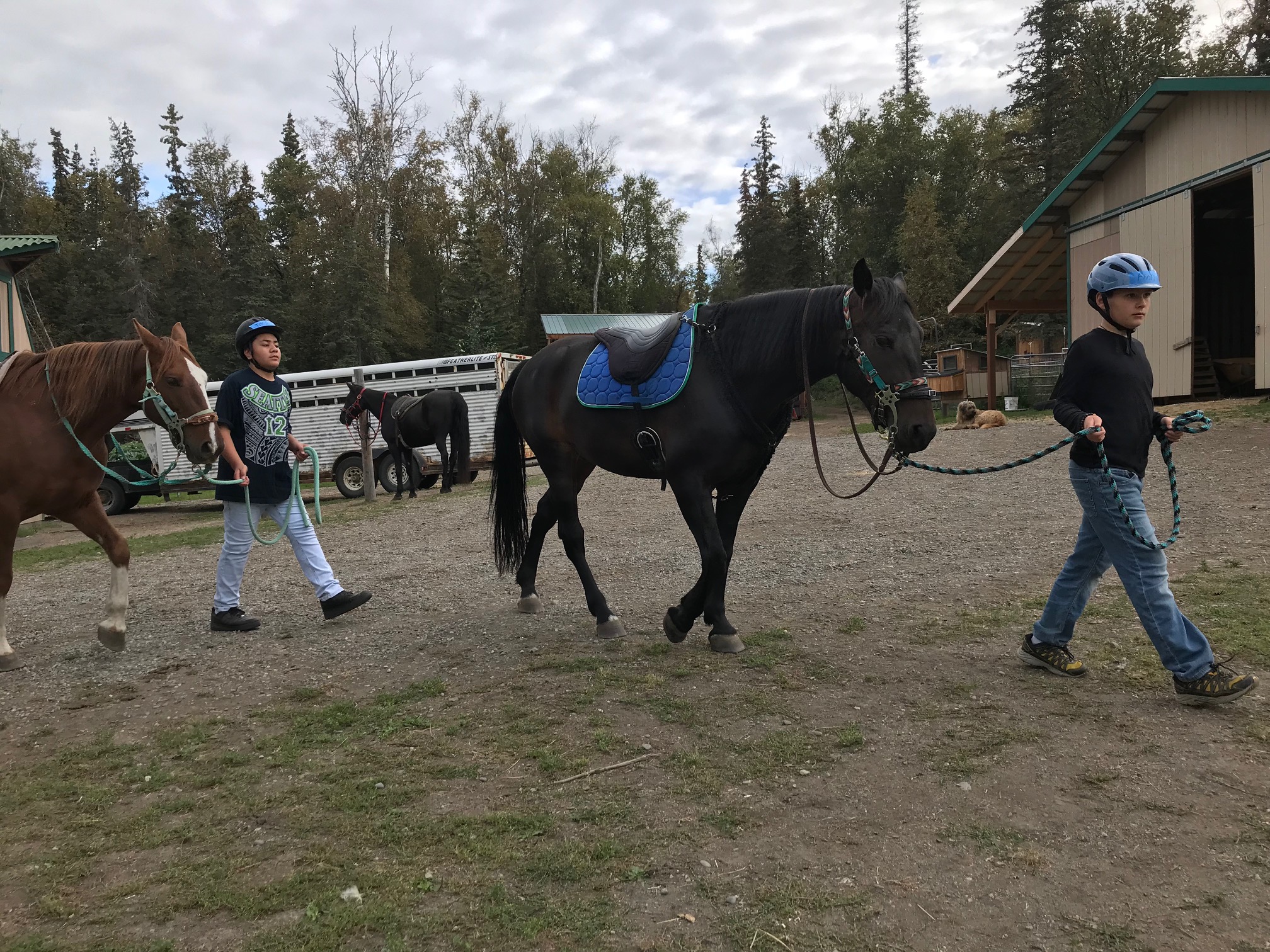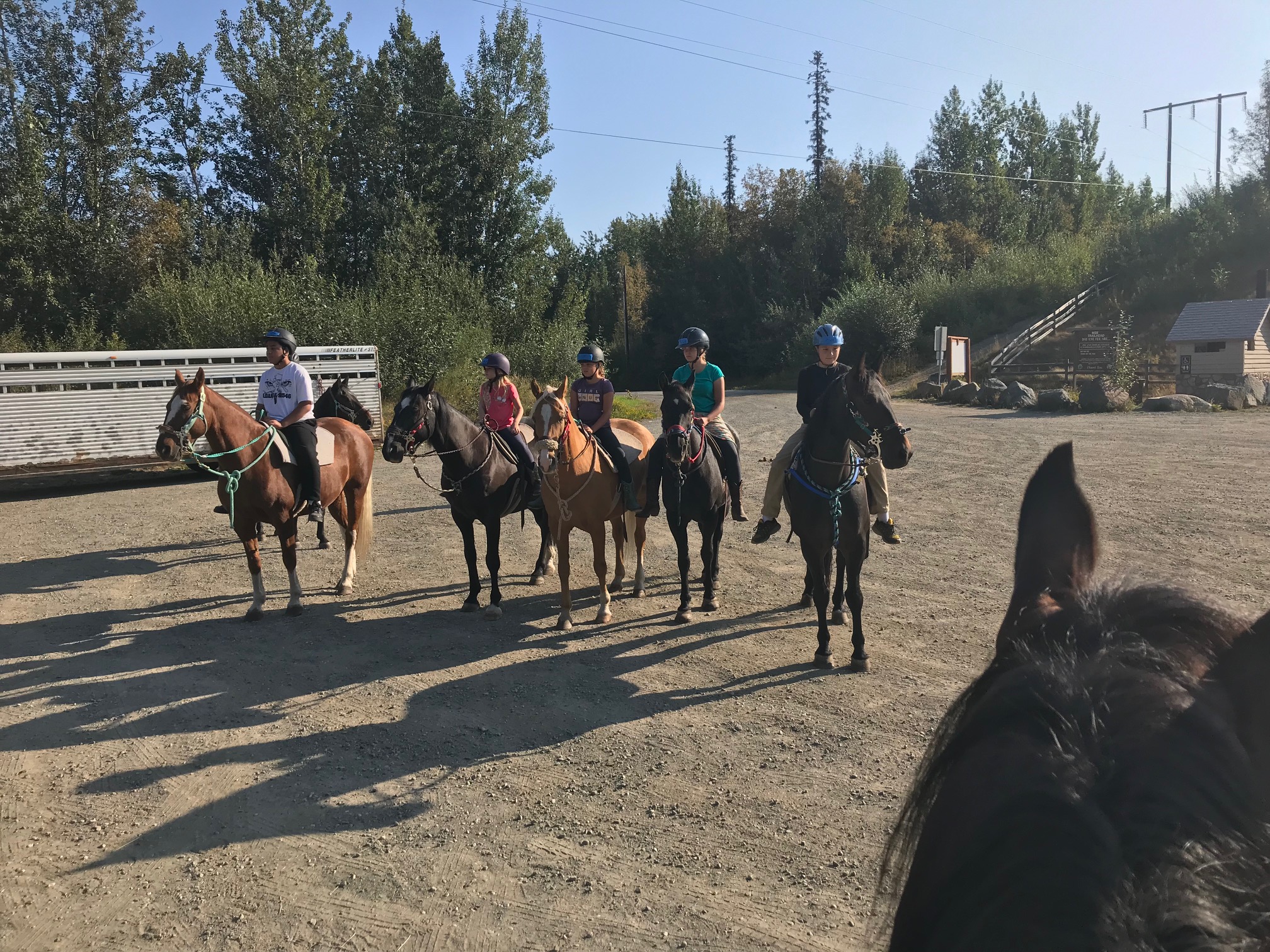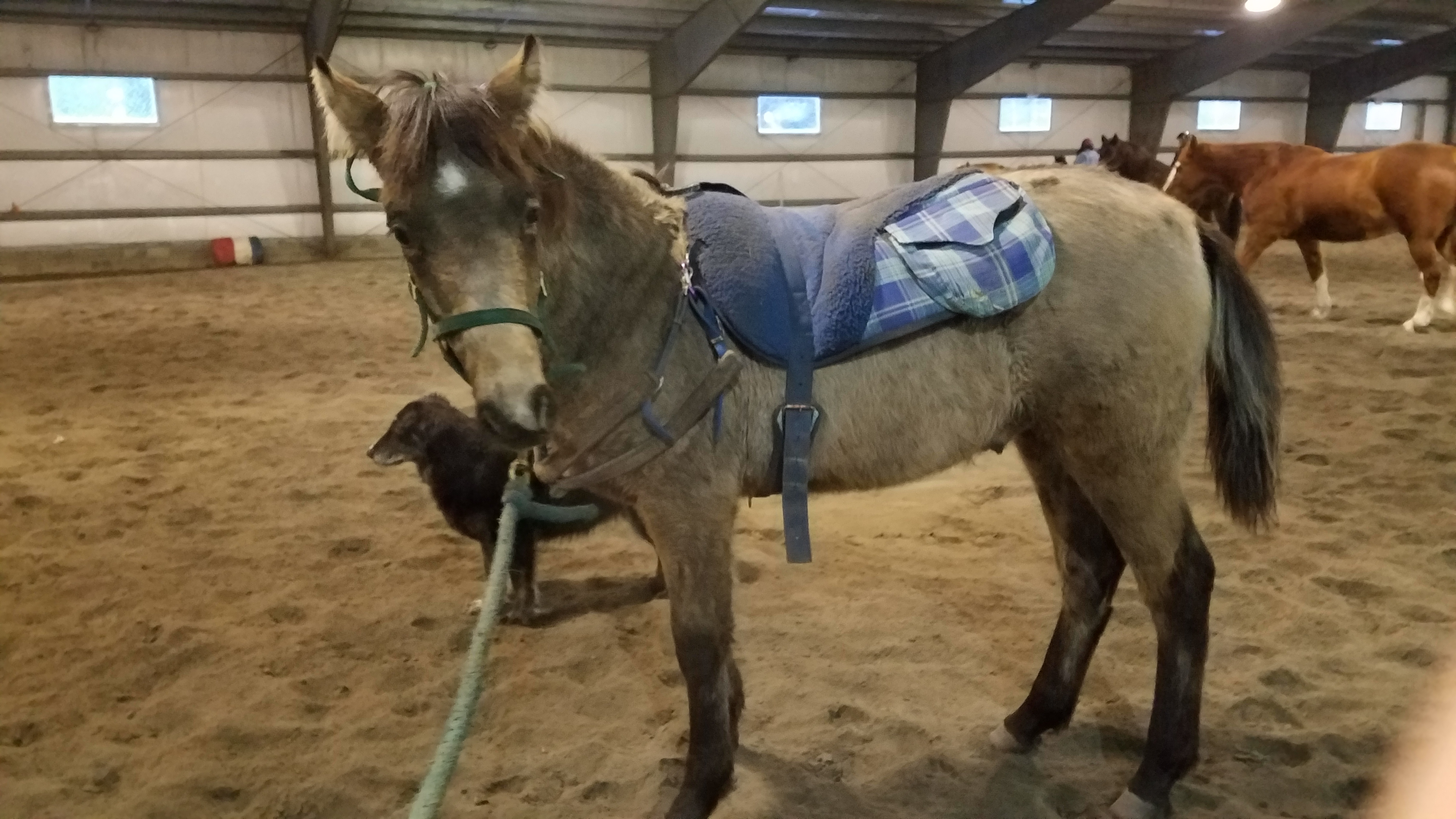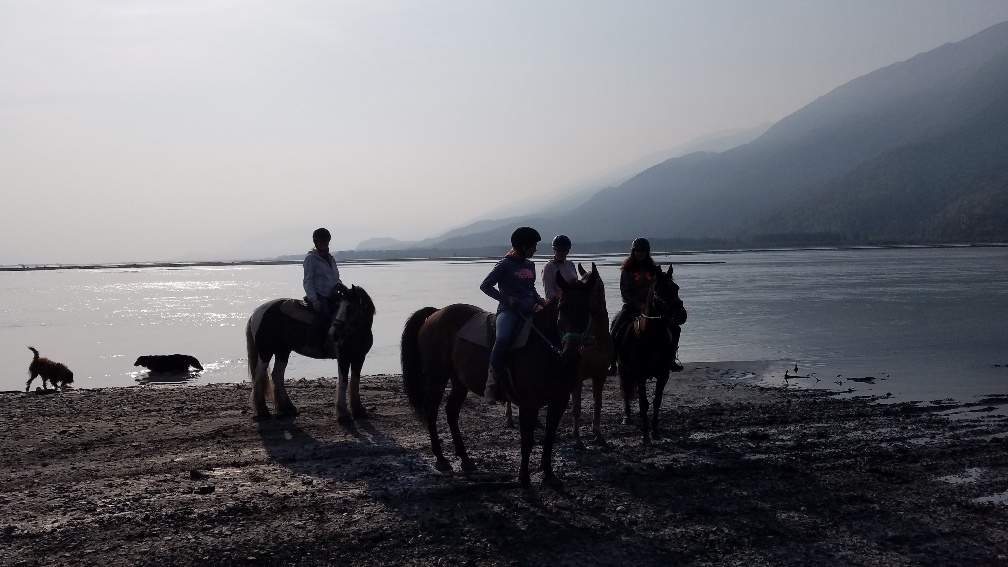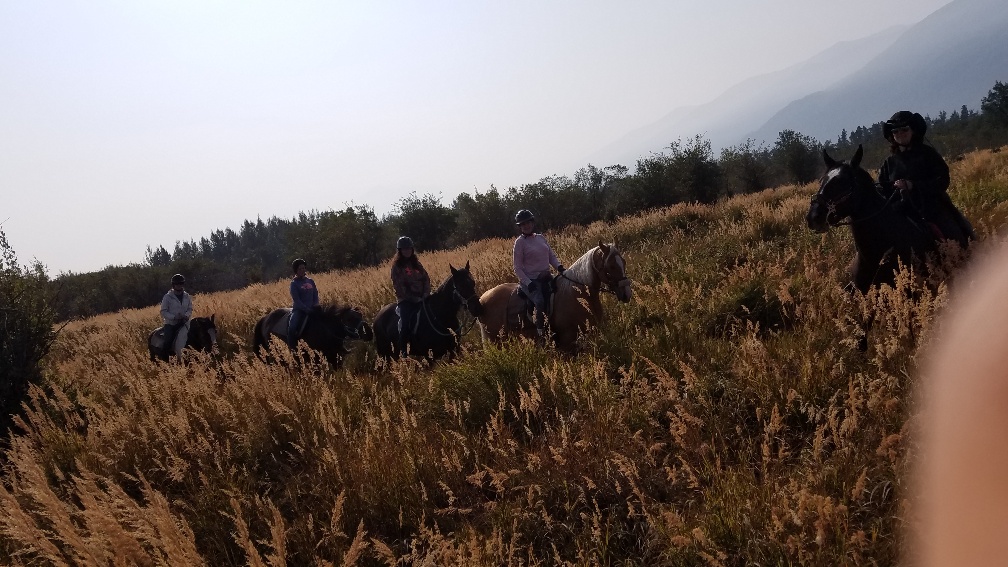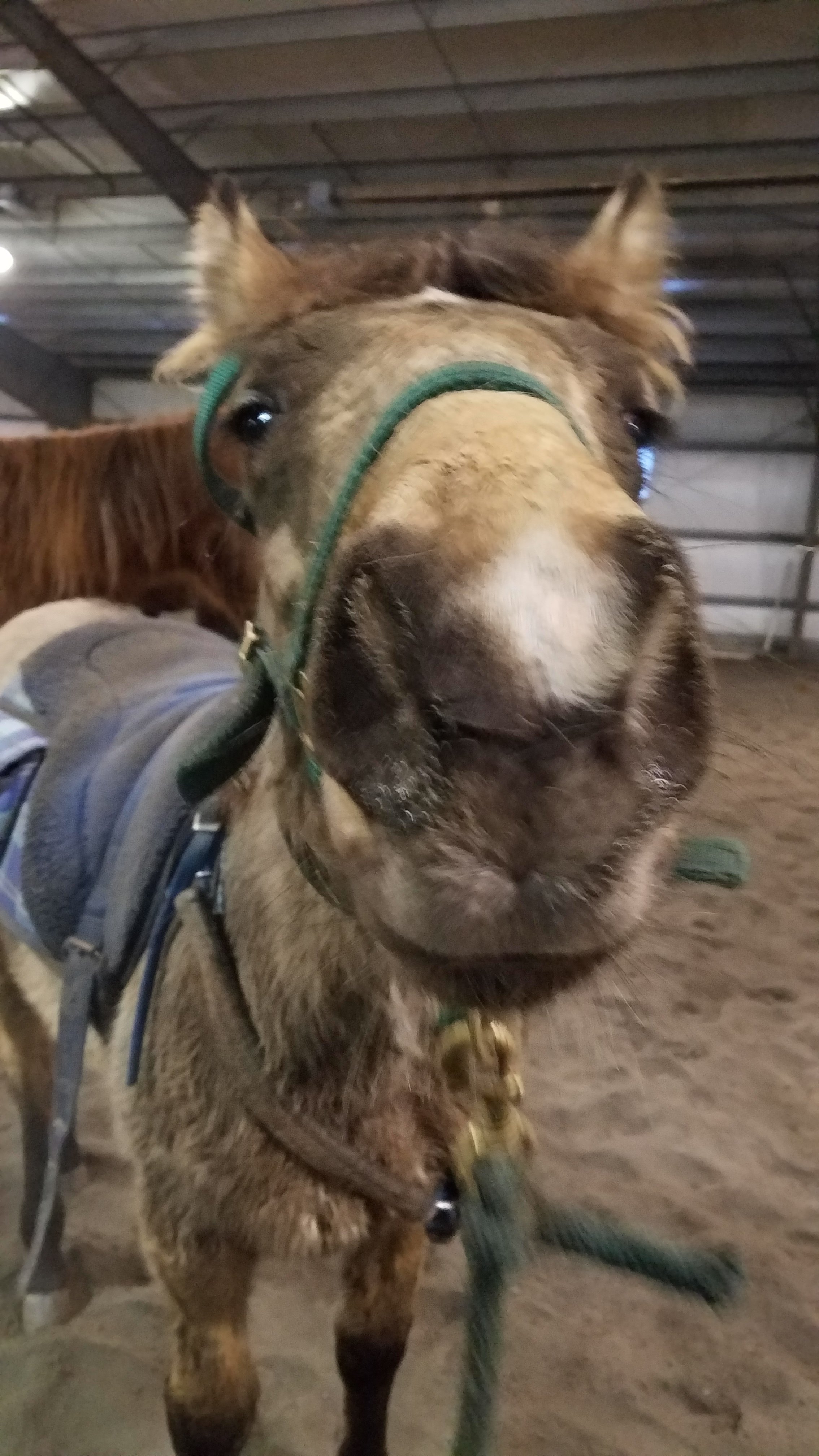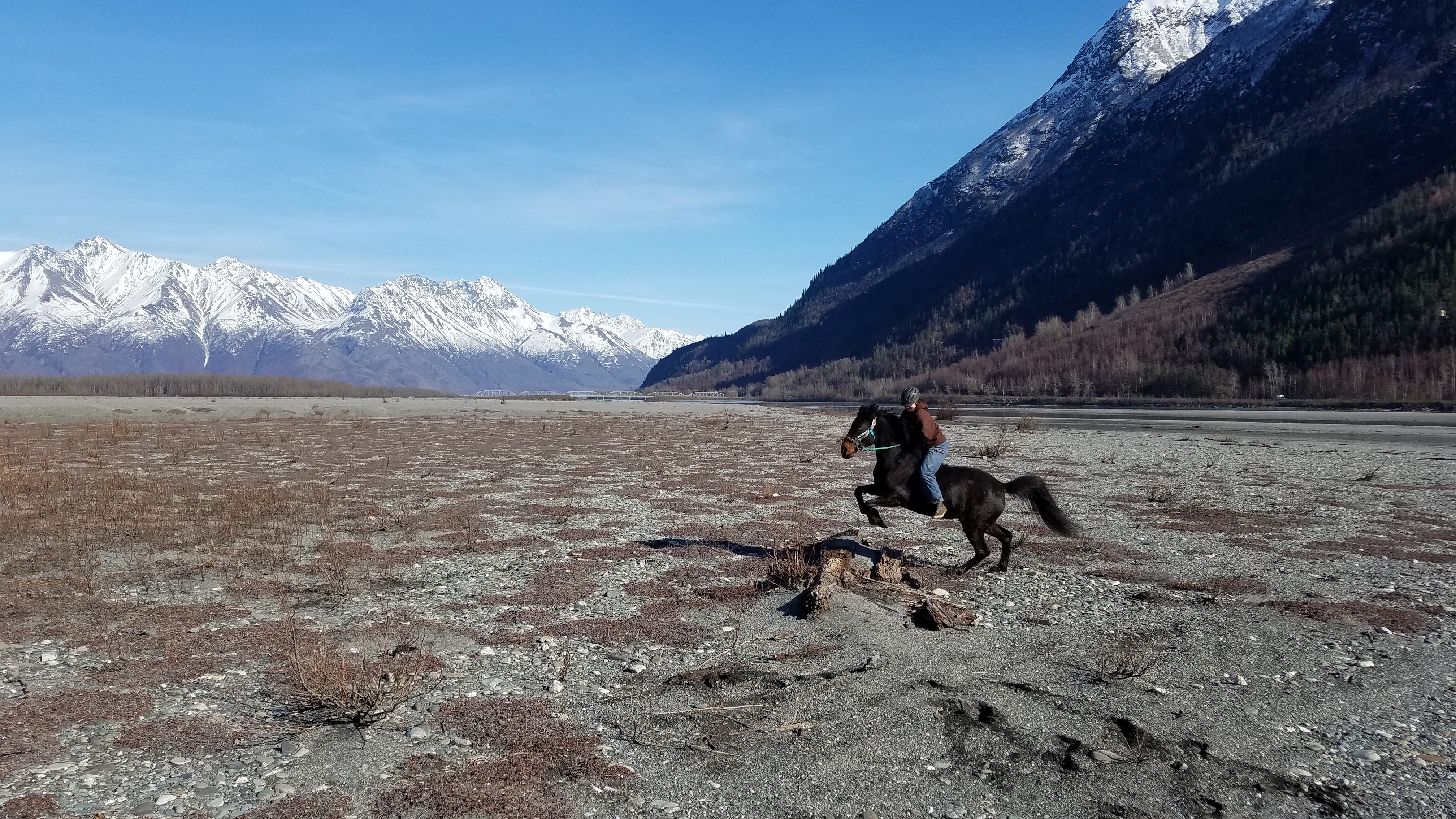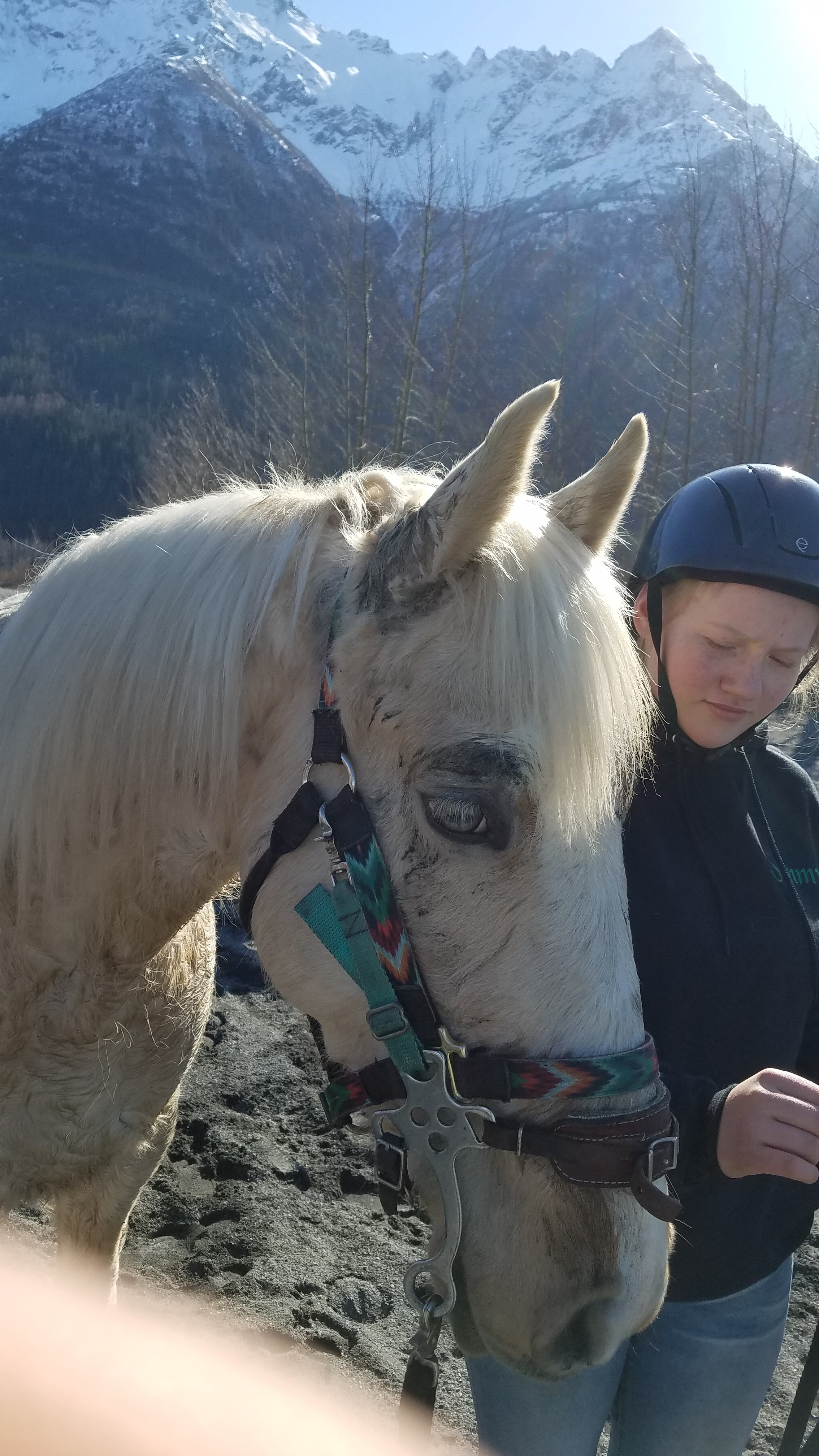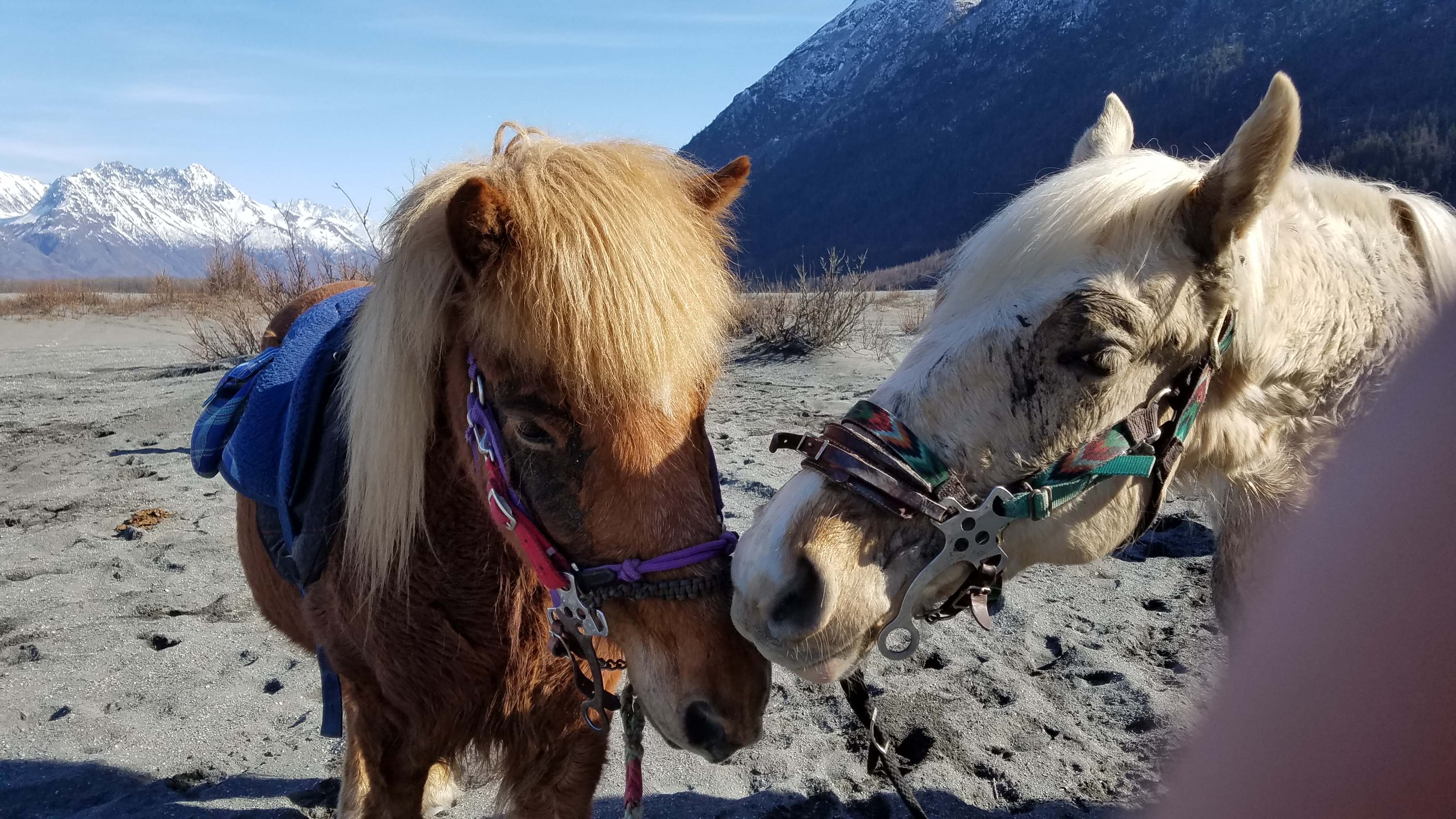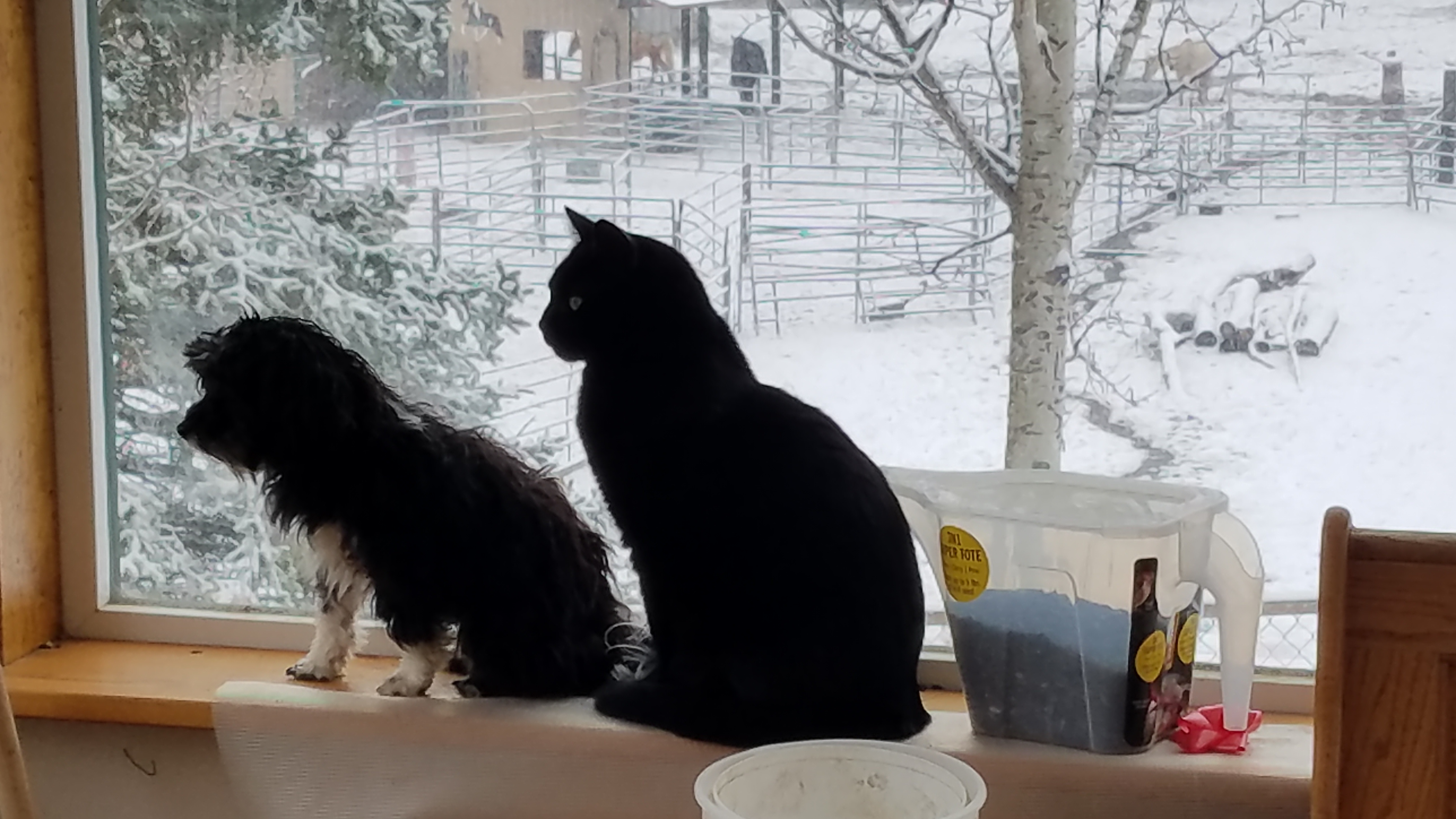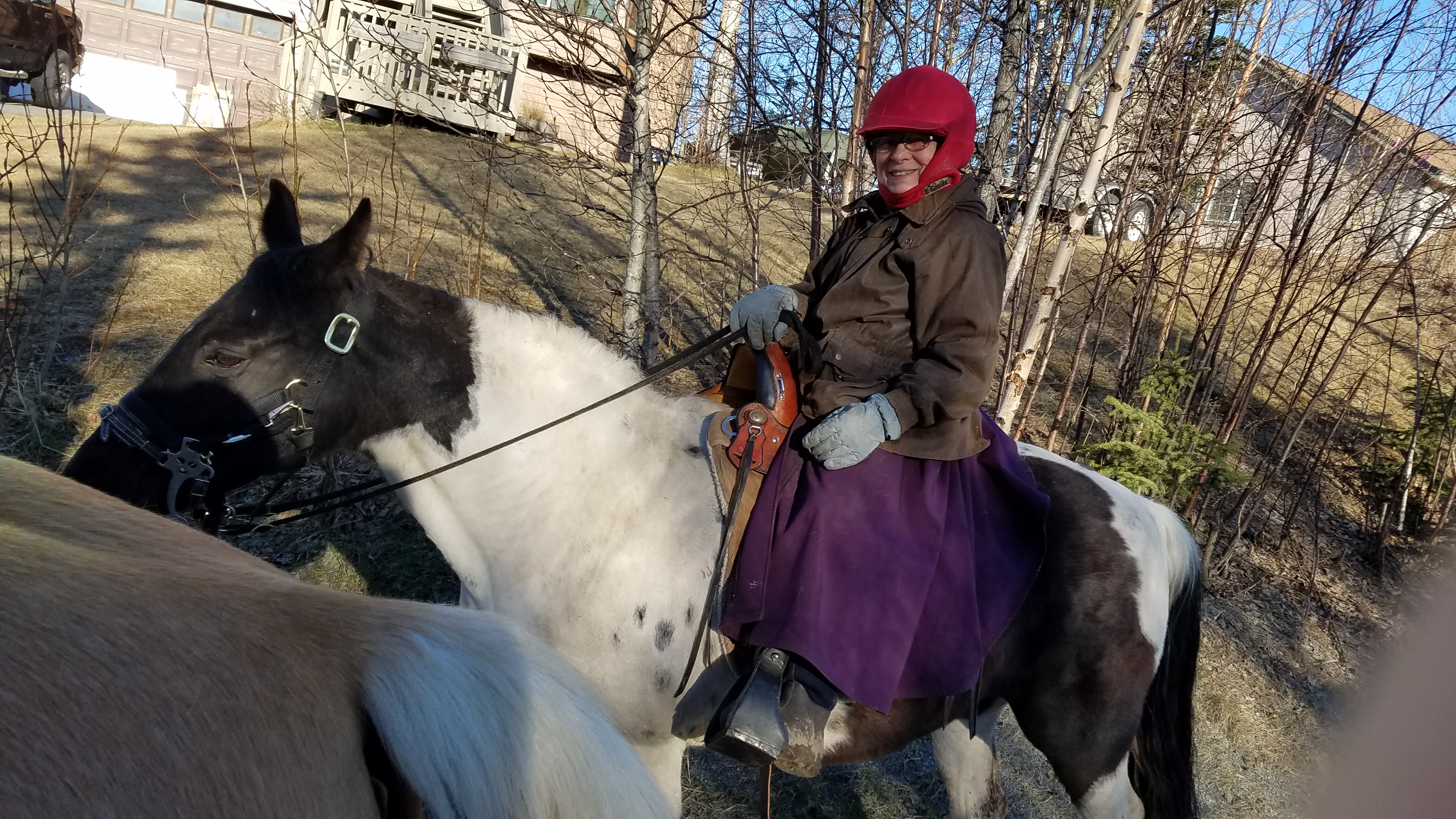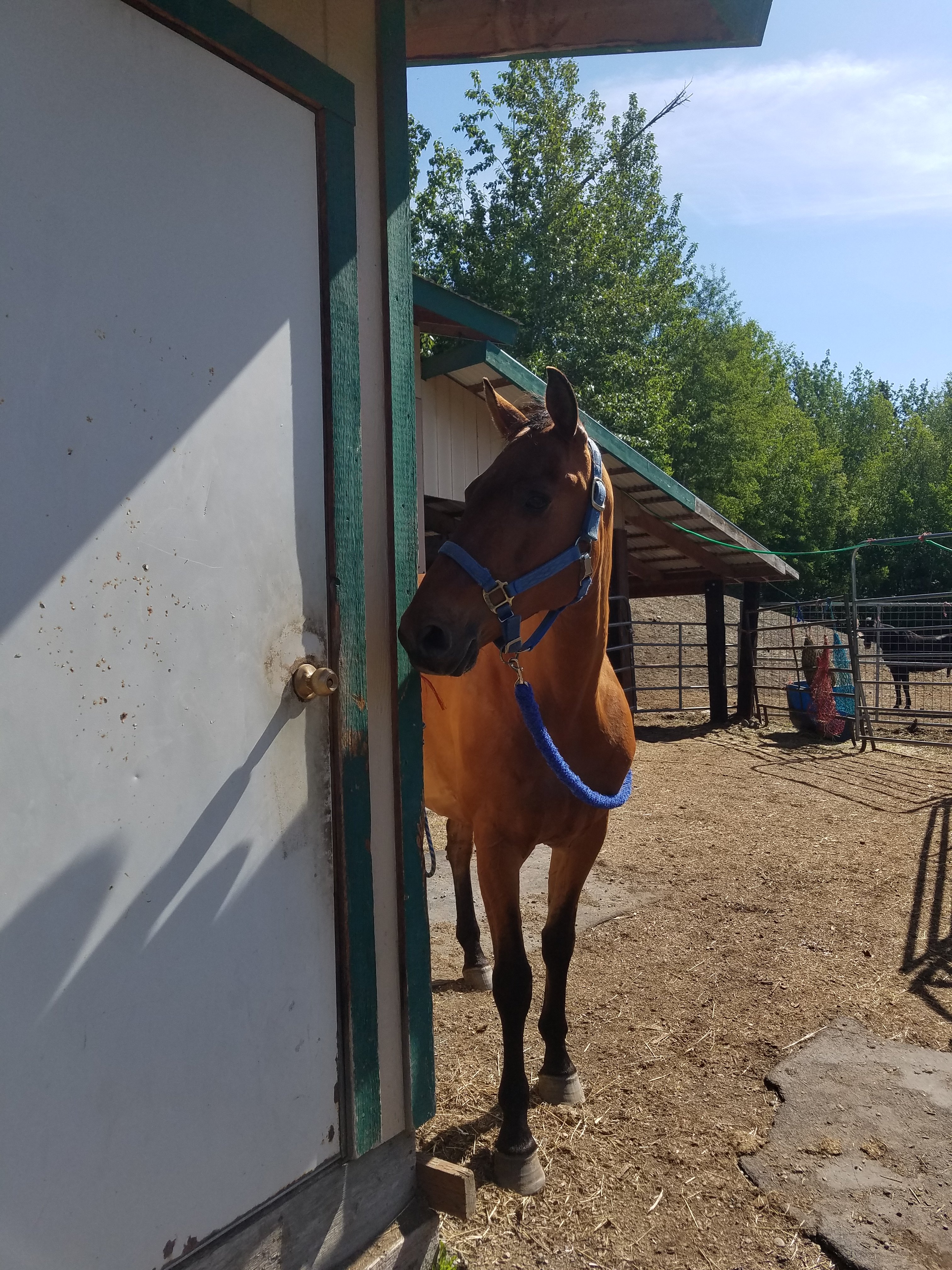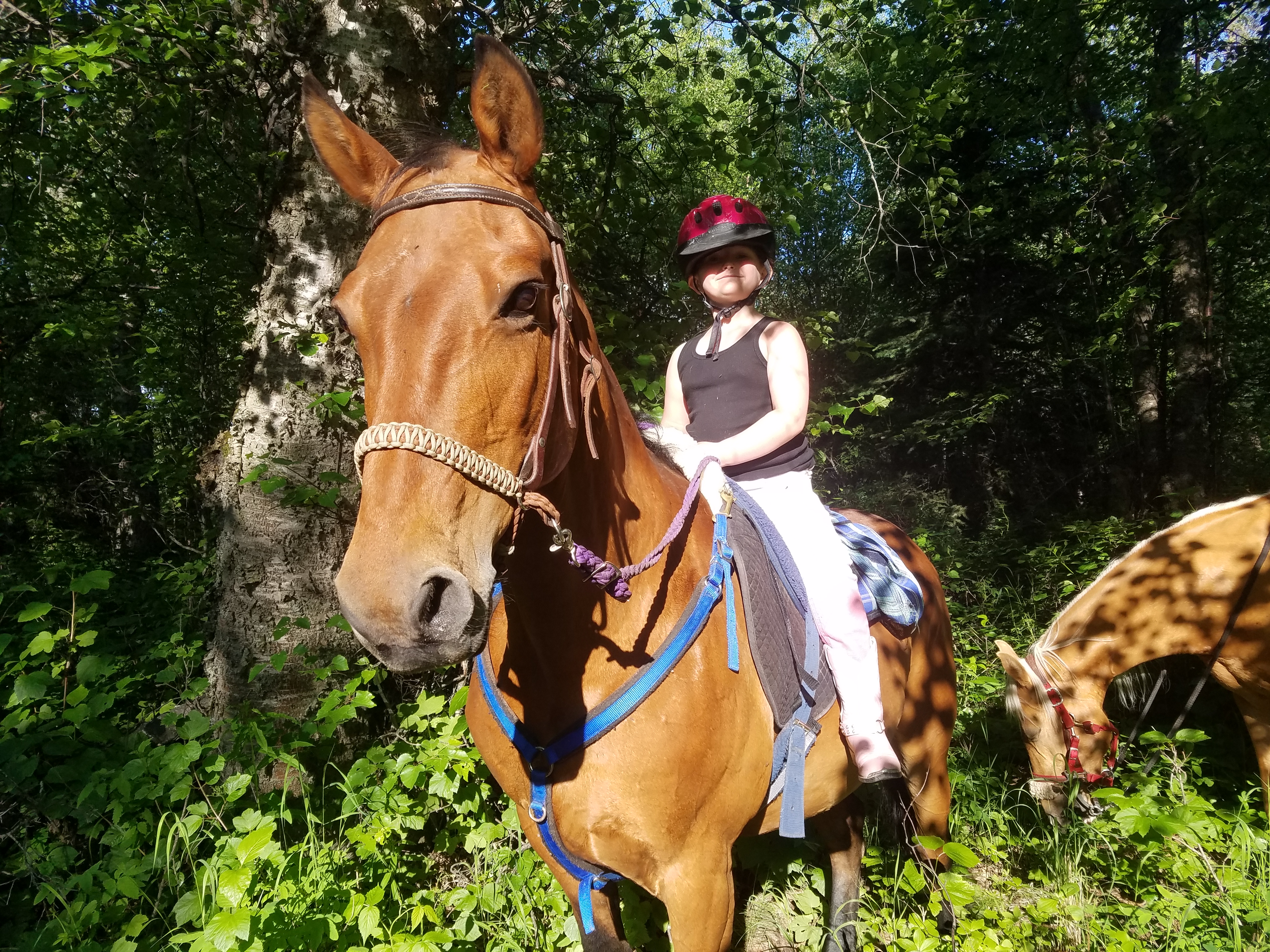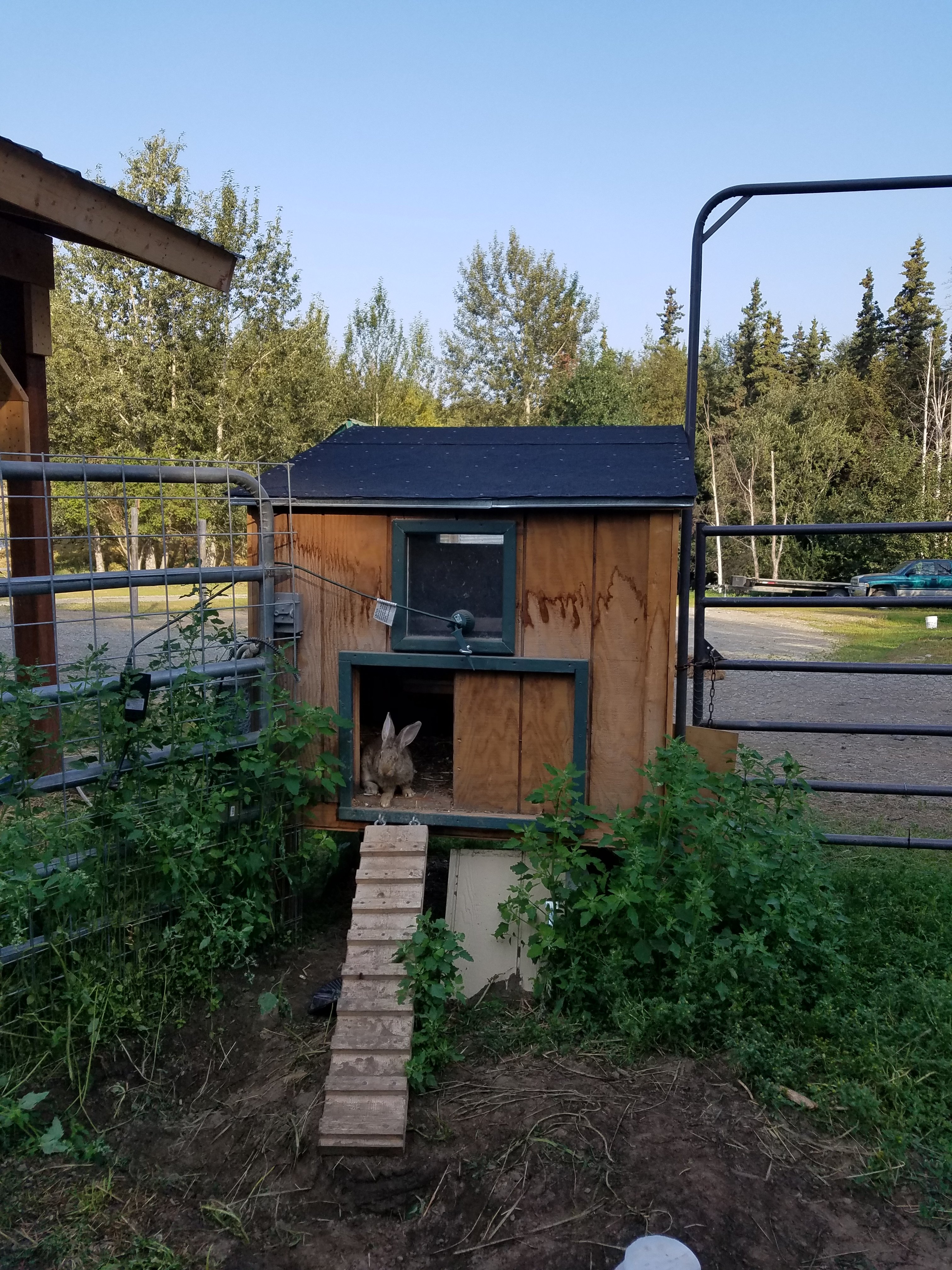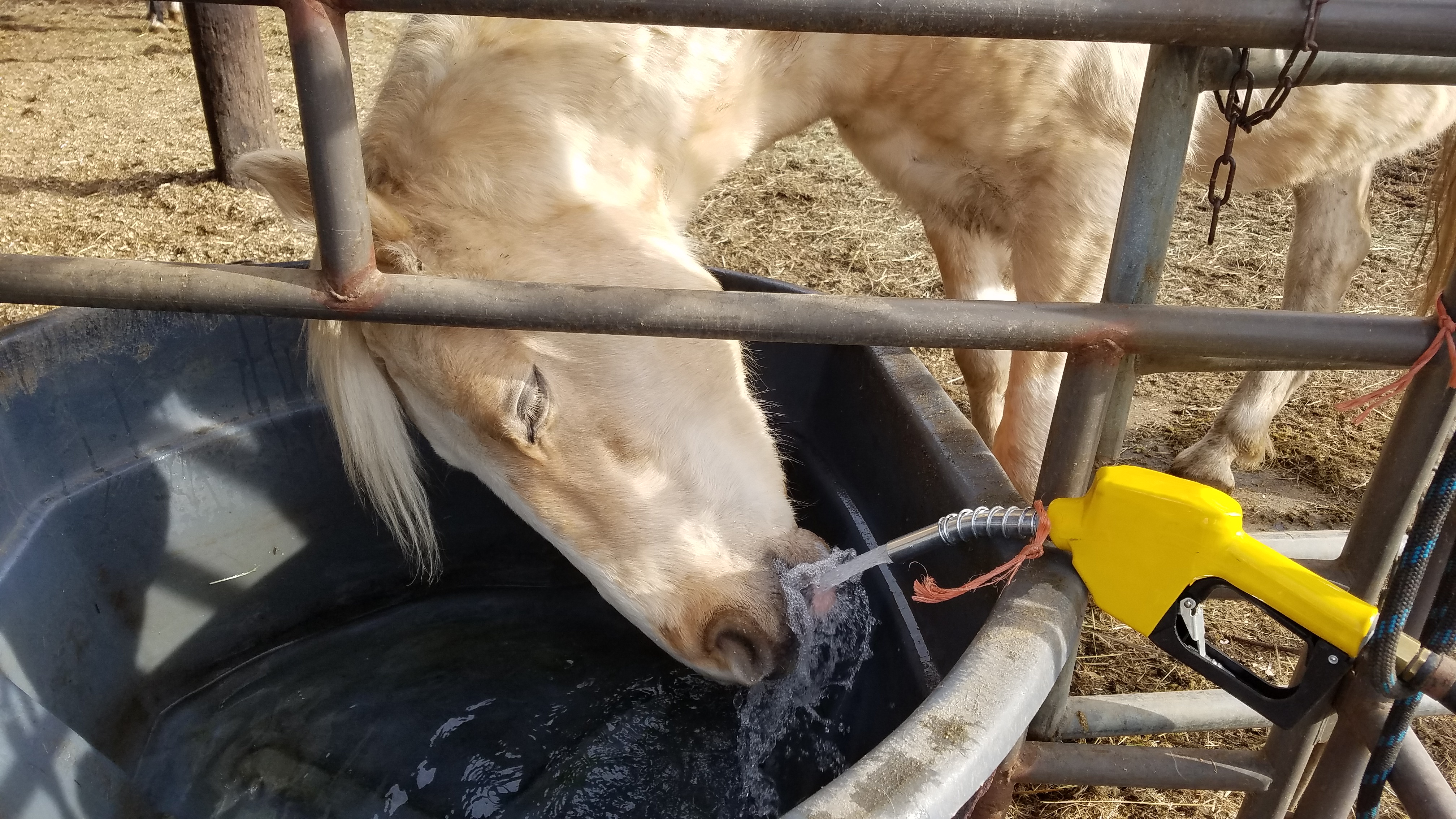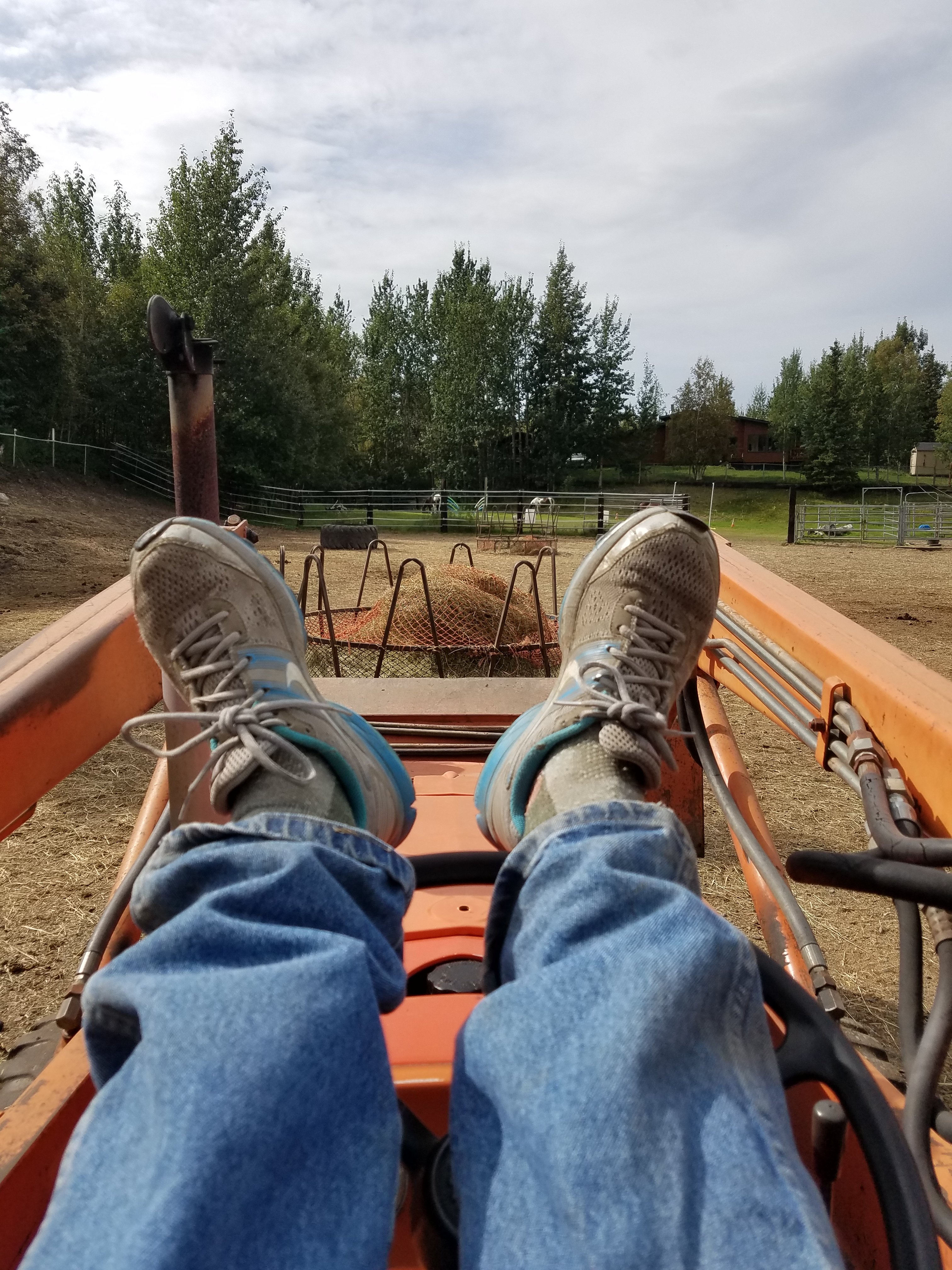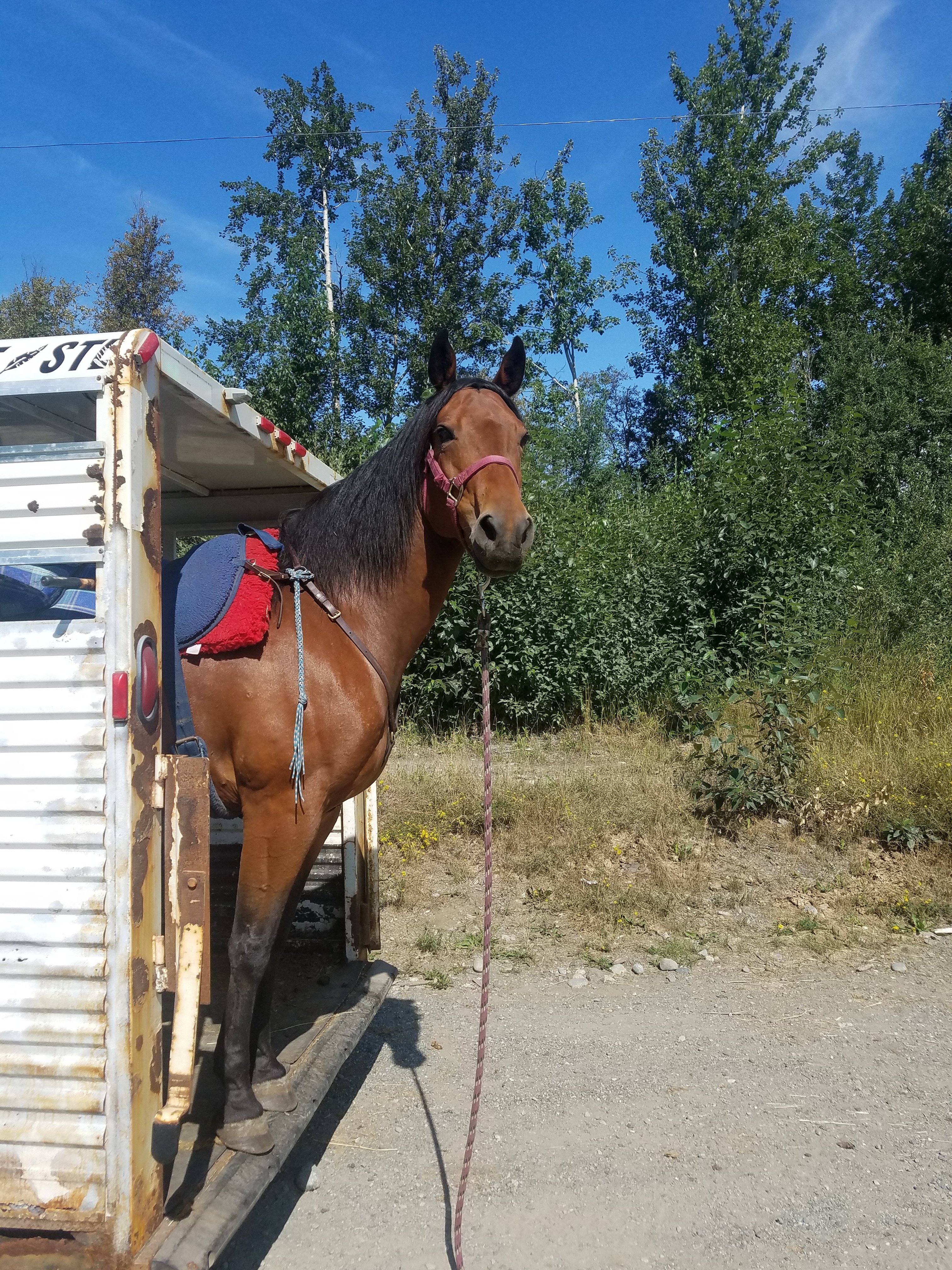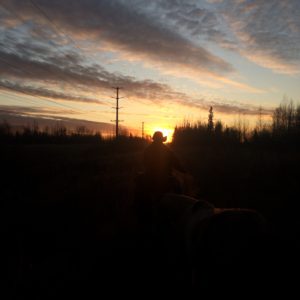FAQ
EZ WALKING STABLES
Palmer, Alaska (907)745-0804
Why do so many first time horse buyers end up getting out of horses within 2 years?
Its really sad to me when a person buys a horse for the first time, they are so excited, they claim they will never sell this horse. Two weeks or so passes and new owners start to realize their dream horse may not be as perfect as they thought. A year passes and now they can see them self selling the horse for they just don’t have the time and other things in their life is drawing them in. So what happen to the dream and determination that was at the beginning? Why is this the case in over 80% of first time horse owners? Simple. Horse owners try to get out on their own too fast and then get stuck when the horse starts acting like a horse. I believe first time owners should board their horses at a facility where they can get help with the horse every time they work with the horse. Assistance to help watch you and your horse and guide you down the right road to communicate with your horse more effectually will help you reach your dream. If owners don’t board, then work with a trainer at least once a week. It’s well worth the expense for you will see your partnership growing and your bond with the horse becoming strong. Plus it’s great having somebody to ask all your questions!!!
Why do horses raise their upper lip at times?
Often called a horse laugh, it is done when a horse is trying to get more of a certain smell into his nasal cavity to find out more about it, much like a snake does with his tongue. Perfumes and lotions on humans can cause horses to curl their lips and sometimes horses curl their lips this way
Why do horses Kick?
Horses kick to protect themselves. This is why we never want to surprise a horse for when in doubt, kick first and ask questions later. When walking behind, we notify the horse of our intentions with a hand on his hip before we move to the other side. Most horse will not kick if they know where we are at. Of course always ask the owner if working around new horses for sometimes, a horse or mule will have a reputation as a kicker and we don’t want to take changes.
Are horse eyes like ours but just further out on the side of their heads?
No, horses see different images with each eye at the same time. Infact it’s believe they see at least 3 different image with each eye. Hence what a horse sees leaving the barn on the right side, with his right eye, will be totally new to him coming back to the barn on his left side. How a horse focuses is different and fascinating too but too long of a discuss for here.
Frequently Asked Questions about Tennessee Walking Horses and Riding in general
It’s easy to fall in love with a Walking horse or other similar gaited breeds of horses, and not totally because they tend to be handsome animals with good dispositions. More important, their special gaits are comfortable to ride over long distances (unlike the jarring trot), making them a trail rider’s dream come true.The easy gaits should be smooth and delightful to experience.
Riding and training one of these horses, however, may be like changing from a one-gear pedal bicycle to a 20-speed model. Gaited horses are complex, multi-geared individuals and present unique challenges for a horse owner who is more familiar with the simple walk, trot, and canter. I can help guides you through the fine points of developing and maintaining these extra gaits so you can get the most of every ride.
Below are just a few questions I’ve been asked. More more detail training stuff, you will just have to call or write me from my contact page. Deb
What can I expect from a Tennessee Walking Horse?
You can have anything you want with a TWH. From one of the best pleasure horses you can imagine, to a show ring performer at the Tennessee Walking Horse National Celebration, the TWH is right at home. With their smooth natural gait and calm disposition, they make the most versatile breed you can own. Trail horse, pleasure horse, or show horse~ A naturally gaited Tennessee Walker; there is no other breed of horse like them.
What is the Tennessee Walking Horse’s disposition like?
Almost all TWH’s are sweet, loving, and calm. Seldom do you come across a nervous, unruly TWH. Besides being a great trail horse, pleasure horse, or show horse, a Tennessee Walker will make one of the best friends and companions you’ll ever have.
What are the gaits of the Tennessee Walking Horse?
The TWH has three distinct gaits. The flatfoot walk, the running walk, and the canter or lope. The flat walk and running walk are four beat gaits. That means no bouncing up and down in the saddle as in the trot; smooth as silk. The canter is a slow controlled gallop or lope. Put yourself on a Tennessee Walker “for the ride of your life”.
Can the Tennessee Walking Horse run?
YES!!! The TWH is as athletic as any breed of horse alive. Many TWH are used for sport professionally. Some of the top Barrel Racing and Cutting horses in competition today are TWH. Riding a Tennessee Walker isn’t just a smooth ride, it’s also great fun on the trails or in the show ring.
What colors and sizes can a Tennessee Walking Horse be?
You will see all colors and sizes of TWH. From 13 hands tall to 17+ hands tall, they can all exhibit the same natural gait and calm disposition. A hand in terms of measuring a horse equals 4 inches. So a horse that measures 15hands tall would be 60 inches in height. Measurement is made at the horse’s withers (base of the neck). Colors run the full spectrum from black to white as well as spotted. Some of the most popular are black , but you will also find bay, sorrel, chestnut, dun, grey, red roan, black roan blue roan, yellow/gold, champagne/buckskin and the list goes on and on. I think I have most of these colors covered!!!
I bought a Gaited horse but I can’t seem to make him/her gait, what can I do?
Often new owners have no previous experience with gaited animals, or if they have ridden a gaited horse or mule, they are uncertain about how to keep them going in their gait. Walkers have “gait” bred into them. This does not mean that after 30 to 60 days of training, your 2 year old or older horse who has not been gaiting will be able to “hit a lick” right away. You will have to put in many miles, giving him time to build his muscles and teach him to understand what you are asking. You will gradually ask for more speed and build consistency.
So simplifying this as much as possible, you know when your horse feels smooth and you know when he feels rough or begins to trot or pace. Your job will be to encourage him to move out with some speed and correct him when (actually, right before) he gets rough/breaks gait. Some horses or mules will get to a certain speed and then break into a trot. You will feel him gather to trot and should hold his forward motion by pushing him with your legs and collecting him with your hands. In time you will build the muscles it takes to maintain his speed in gait. Some horses will gradually become more diagonal or lateral as they pick up speed. Unless you are going for a particular gait, keep your horse in the one that feels best to you. He will build speed with practice and eventually he will pick up his gait on cue and hold it for you. Another Suggestion? Get help from somebody who rides gaited horses. It makes a big difference!!! If you want to learn to jump, are you going to an Instructor who teaches Western Pleasure? Probable not, got to somebody who is successful with jumping or in this case, gaiting!!!
What age is too young or too old for horseback riding?
Horses are good for children and adults. There are many reasons why a child should learn to horseback ride or way an adult should get out and follow their dream. Riding is a great way to get away from TVs, cell phones, game consoles or computers! Riding lesson can be a step towards a lifelong activity that benefits both body and soul. The age a child starts is basically dependent on the child development. Usually by 7 or 8, I find they can handle their horses. Younger children can benefit too but its more of a “pony ride” for them.
How Old to too Old to ride?
I plan to still be riding absolutely as long as I can. I’ve know folks in the 80’s who ride and I think it’s great. Since I ride Tennessee Walking Horses and other nice smooth and wonderful disposition gaited horses, riding is easy no matter what your age. I think my oldest student to date is 80! You can do this to with my help.
So when are you too OLD? Never if you really want to ride!!!!!
Missing Elements in Most Riding Programs
I enjoy training horses and training people to enjoy their horses. My program is different than a lot for I concentrate on the horse’s needs and educating the people to recognize this. EZ Walking horses are not the typically dull over used, boring schooling horses. All horses are still in training (until about age 28 maybe). So things stay exciting (but safe). Everybody loves learning new t hings.
All Riders forget some of the basic stuff they should have learned early on in their riding but probable have forgotten due to be insensitive and believing that old horses can’t learn or who know why. For instance, riders like to yank up on the bit if a horse tries to eat on the trial, then kick the horse hard while still holding the reins tight so the horse can’t put his head back down. Isn’t this a counter-effort, you are telling the horse to go but holding him to a stop. Why not ask the horse to pick up his head with a top on the withers (a signal that must be taught), then just ask him to walk first by nudging and then if necessary kicking or using a riding crop. BUT DON’T PULL THE HEAD!!!! Most horses don’t walk and eat, they STOP and eat, so use your brain and ask him to Walk!!! By teaching a signal, if you want to let the horse eat, I give a head down signal (pushing down on the withers with my hand) and when I’m ready to go I tap the withers and then ask the horse to go. Its real nice, the horse is not yanked, kicked hard, yelled or confused. And the rider is not pulled out of the saddle and suffering from high blood pressure. How is your horse suppose to learn to respond to a asking command if you don’t ask first?
One of the sights I truly dislike watching is a group of school horses plodding around an arena with a dull, depressed appearance, lesson after lesson. This is especially depressing to watch when the instructor makes no effort to teach about equine behavior, communication and “feel”. The horses are “dull” to each rider’s aids because the instructor is not teaching these concepts. I don’t believe that it’s fair to take the equine from it’s natural state and make a dull, depressed animal out of him. We need to try our best to educate our students of equine behavior, communication and basic training principles. We need to teach our students that they are not just a passenger in the saddle, but they are actually training the horse to either respond to them or ignore them every second they are interacting . This is my goal for every student.
Below, are a few missing elements, helpful teaching tips and such to help remind and to enhance student’s riding ability and communication potential.
1. Soft hands. ESSENTIAL. No horse deserves to be even lightly jerked in the mouth with each Walk, trot, pace or canter stride. If a rider cannot keep his/her hands steady and in rhythm with the horse’s natural “bob” at the slower gaits, then the rider should not be cantering.
One tip for teaching soft hands and bend and release at the elbow. Using a spare stirrup leather, strapped around the base of the horse’s neck. Put the rider on a lunge line and have her hold the neck strap with just enough pressure that it is not loose at the horse’s breast. Encourage her to keep the same amount of pressure on the strap while walking and trotting. The posting trot is especially tricky for beginners. They tend to keep their elbow joints stiff, which causes them to raise and lower the reins with each posting stride. Don’t rely on the neck strap for extensive training, because it can become a “crutch” that the rider should be dependent on. However, use it as a fun supplement to help the rider become more aware of the importance of this element in riding.
2. Responsive hands. Horses quickly learn to become responsive when a rider trains their hands to close slowly and open quickly. Horses learn from the RELEASE, not the pull. We will spend many lessons with to teach this concept, and remind them of it in future lessons. Steps, first, have them halt their horse. Then ask them to give the horse all of the slack in the reins. Show them how to slowly bring the rein up, slowly close their right hand around the rein, and slowly apply gentle pressure to the right side of the horse’s bit. The instant the horse moves his head a centimeter to the right, drop the rein. This is an exaggeration of what really happens when a rider has soft, responsive hands. However, to maintain a responsive horse, every correct movement the horse does (no matter how small), should be rewarded with the release of pressure of that cue. It takes a lot of practice to train the hands to be this giving and responsive, but the student’s communication ability with the horse will have increased greatly once this is learned.
3. Soft cue first, firm cue after. Remember the number 3. First Ask, then Tell a little firmer, then Promise or demand that the horse do it. Use only the pressure necessary to get the response you have requested. Especially when riding a “stubborn” horse, it is very important to give the horse a soft “hint” before becoming firmer in your cues. This gives the horse the chance to respond to a lighter cue, a chance that has been stolen from many school horses. Always ask with a soft cue (a light squeeze of the calf or heel), wait 3 seconds for a response, and if there is no response apply a firmer cue such as light bumping of the calf or heel until the horse shows forward movement. The horse may not respond quickly on first few tries, but he will soon learn that it is more pleasant to avoid the bumping or kicking if he shows forward movement when the rider first asks with a light squeeze. You GOT to be consistent!!!!
4. Balance, relaxed. DON’T depend on your stirrups for your balance. We don’t have this problem for riders don’t get stirrups until they develop their balance bareback. Beginner riders started in saddles get to depending on their stirrups for most of their balance. What would happen when the student accidently loses a stirrup? If the hands are used mainly for balance, the student will lose their balance completely if the horse dodges, throws his head down, bucks, spooks or jumps. Each of a rider’s body parts should work together to balance as a whole. Students should work on the lunge line with and without reins, with and without stirrups, and even without a saddle. Learn to become in-tune with his/her body balance, to relax and allow the natural weight of their body to balance them. Student will be asked to close their eyes for a few seconds every few strides to feel the horse’s movement and the shift of weight with each stride. Students are encourage to relax their stiff or flexed muscles. Learning to ride in the “correct” position comes much more naturally after a rider has learned to relax and flow with the horse’s movement. In addition, once the rider becomes well balanced, light and soft, he/she can put more energy into actually communicating with the horse rather than trying not to fall off or bounce around.
5. Rise quickly, sit slowly. While we don’t do a lot of posting on Walking horses, we do rise to ask the horse to go and sit to ask the horse to stop or slow down. What I’m saying is when you want your horse to speed up, you increase your energy, sit up maybe even move forward to encourage your horse go faster. Then to stop, we sit down, slow our bodies and this will signal the horse that we want to slow down or even stop.
When we do ride trotting horses, this is good advice. While posting the trot, I’ve seen too many riders that rise slowly and sit quickly, however, this is not comfortable for the horse. The “up” action of the posting trot should be done more quickly that the “sitting down” action of the posting trot. In the “down” action of the posting trot, by sitting down more slowly you are creating less shock against the horse’s back. Teach your students to sit gently back down into the saddle on each posting stride to avoid uncomfortable bumping on the horse’s back.
By using these five elements of good riding and training, you will become soft and responsive with your riding horse, Plus you will be helping to keep my horses soft and responsive with positive attitudes. A real Win-Win situation. And a must at EZ Stables.
Thank you for visiting. Please check out the rest of our Website. You’ll find a little bit about who we are and where we’re located. Feel free to call, write ,visit or email us anytime using the information on the contact page. We hope you enjoyed your visit. Come back often as something is always changing. Thanks
